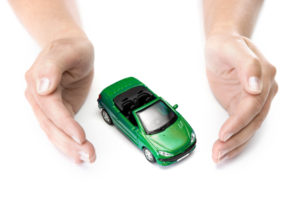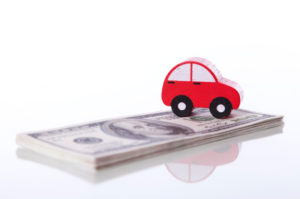10 Tips to Compare and Save on Auto Owners Insurance
Finding auto owners insurance at a good price takes some serious effort and can be frustrating, which is why a lot of people tend not to bother with it once they have it. What most people do not realize is that it could be costing them a lot of money. It is possible to lower the cost of auto insurance considerably if one follows a few simple tips. Enter your ZIP code and allow us to do a free auto insurance comparison for you! We will help you save the most money possible!
1. Switch Carriers
Changing auto insurance providers can make a difference in what one pays in premiums. Comparing prices online is especially easy, convenient and fast. Also, since the insurance agent is eliminated, many companies are willing to give very competitive auto insurance quotes. However, before making the switch one has to evaluate the companies carefully.
Talk to friends or family about their experiences with different providers. Especially find out about how efficient the company is when it comes to paying out claims. There is no point in getting cheap auto insurance from a company if they give trouble when it comes to claims.
 2. Make Discounts Work
2. Make Discounts Work
If one remains with an insurance company for more than a year, many offer loyalty automobile insurance discounts. Many companies also offer discounts for a clean driving record, equipping the car with safety features, completing safe-driving courses and a host of other reasons. Discounts are one of the best ways to save money on insurance. However, what most people do not realize is that these discounts do not come into effect automatically.
While many companies try to apply as many as possible, they don’t always have sufficient information to know which discounts apply to a given individual. With so many people to deal with, specific discounts tend to get overlooked by the agents. To make sure one gets the benefits of all possible discounts, do the following:
- Make sure to ask which discounts are available and inform the company of the ones that apply to your situation.
- Check to make sure all applicable discounts show up on the policy.
3. Combine Policies
Many auto insurance companies give 10% to 20% discounts when auto insurance is combined with some other policy, like a renter’s or a homeowner’s policy. Other companies even give discounts on both policies. It is possible to get both policies for a price that is even lower than what one would end up paying if they only had the auto insurance. Another common combination that is becoming increasingly popular is tying auto insurance with health insurance. To really save money make sure of the following:
- The policy being combined with auto insurance should be one that is really needed.
- Do not get stuck in a worse financial situation by taking on a policy that is not needed just to save a few dollars on combined policies. Paying for something that is not needed does not amount to saving.
4. Increase the Deductible
It is a well-known fact that raising deductibles lowers the cost of premiums. But before taking on this responsibility, one should make sure that they can pay the stated deductible in case there is a claim filed. To make sure this can be done:
- Set the deductible money aside in a savings account, and do not use it for any other purpose.
- Once the deductible money has been set aside, and one is sure they can afford it, then raise the deductible.
Raising deductibles helps to eliminate needless auto insurance coverage and considering that small claims increase the cost of insurance in any case, filing less claims will automatically diminish the chances of premiums increasing in the future. For good drivers, the savings in premiums will more than pay for the small claims avoided over time.
Free Car Insurance Comparison
Compare Quotes From Top Companies and Save
Secured with SHA-256 Encryption
5. Carpool
Besides helping the environment, carpooling with three other people will cut down on the number of miles being driven by 75 percent. The less one drives, the greater the savings in insurance premiums. Almost all of the insurance companies keep track of mileage. Less than 7,500 miles is thought to be a pleasure rate, the lowest possible.
Up to 13,000 miles is medium and above that will earn a higher premium cost. The amount one saves will vary and depends on a number of factors, but it can be as high as 25%.
 6. Get Only the Required Amount of Insurance
6. Get Only the Required Amount of Insurance
The needs in insuring a new car are different from insuring an older one. Premiums for brand new cars are higher because they usually require both comprehensive and collision coverage, especially if one took a car loan. Comprehensive pays for the repair of one’s own car if damaged in situations other than an accident.
Collision covers the damage if one is in an accident. If a car has a lot of mileage on it or is more than five years old, it may be a good idea to not get collision and comprehensive coverage. This is because one will end up paying more in premiums that what the car is worth.
7. Install Tracking Devices
If one is a cautious driver, it may be a good idea to get a new policy. Some auto insurance companies install a small device to the insured vehicle to monitor the driver’s habits. The device measures things like times traveled, speeding, sudden stops and distance. Allowing the company to do this could mean savings of up to 60% on insurance premiums, but it does mean giving up some privacy. On the other hand, if the driving habits are not to the company’s standards, they can raise the rate by up to 9%.
8. Check the Credit Rating
Some insurance companies use credit ratings as one of the factors when determining the auto rates of premiums. This is because according to statistics, people with higher credit ratings generally file fewer claims. If one has been using the same credit accounts for any length of time and paying off regularly, then they are believed to be more stable. Credit ratings can’t be used in mid-term to increase rates, though.
As long as the policy is continuous, external information can’t be used; however, claims and traffic violations can be used to raise rates. If a policy was written when the ratings were good, then one is safe. On the other hand, if the policy was written when the ratings were not so good but they improve by renewal time, it may be a good idea to point it out to the insurer and ask for a better rate.
If they do nothing about it, then it may a good idea to shop around for a new insurer who is willing to take the good rating into account and give a better price.
9. Shop Ahead
Before buying a new car, check out the insurance rates. Many people have the understanding that SUVs are automatically more expensive to insure as compared to Neons. This is not always true as some companies will hike liability based on the damage one’s vehicle can inflict. Big cars can inflict more damage.
They also rate autos on factors like how badly they can be damaged in an accident, how prone they are to being stolen and how badly the drivers or passengers can be injured. In some cases, that Honda or Jetta may turn out to be a lot more expensive than imagined.
 10. Reconsider After-Market Accessories
10. Reconsider After-Market Accessories
In case a vehicle is stolen or totally demolished in an accident, the insurance company will determine the fair market price or actual cash value. The vehicle will be considered as a single package and even if one paid thousands of dollars for extras like wheels, stereos and exhausts, they will not get a dollar for dollar return. The items costing many thousands of dollars may only add $1,000 to the value of the vehicle.
When shopping for auto insurance the key point to remember is that every tiny bit adds up in the final calculations. While a two percent discount may not seem like much of a discount for maintaining a clean driving record, it adds up when combined with other tips, especially over a long period of time. Enter your ZIP code and find the best auto insurance with our FREE search!
